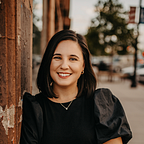A Class Divided: An Experiment Involving Race and Prejudice
Jane Elliot’s Blue-Eye Brown-Eye Experiment
“Darkness cannot drive out darkness; only light can do that. Hate cannot drive out hate; only love can do that.”
— Martin Luther King Jr.
In 1968, the day after King Junior was assassinated by James Earl Ray, teacher Jane Elliott decided it was time to stop talking about racism, and actually, show to her third graders what it felt like to be discriminated against.
She knew children wouldn’t understand the gravity of the situation, and showing them was the only way to demonstrate the devastating effects of racism and prejudice. To prove that racism could only cause harm in this country, Jane Elliott would segregate her class into brown-eyed and blue-eyed groups, which would cause the children to naturally discriminate against one another.
You see, Jane Elliott, of Riceville Iowa, could not dismiss the assassination of Martin Luther King Junior. Instead, she plunged forward on a mission to cure racism.
Jane said when King died, she listened to arrogant white reporters question the black community, asking who would lead them now? For example, one reporter stated,
“When our leader (John F. Kennedy) was killed several years ago, his widow held us together. Who’s going to control your people?”
Jane remarked that they referred to the black community as “subhuman,” a people who needed to be controlled. She thought that if mature grown males were so ignorant on the subject of race, she wondered what her 3rd graders would think about the topic.
The next day in school, Jane asked her students if they wanted to judge one another by eye color, and of course, the little 3rd graders thought it sounded fun. She set up the rules and told the class that people with blue eyes were better and smarter than people with brown eyes. Blue-eyed people would get 5 extra minutes on the playground — and blue-eyed people could not talk to brown-eyed people.
After recess that day, the brown-eyed children complained that they were called “brown eyes” in a teasing manner, and one boy even hit his friend for calling him a name.
At the end of the experiment, Jane said: “I watched what had been marvelous, cooperative, wonderful, thoughtful children turn into nasty, viscous discriminating little 3rd graders in a space of fifteen minutes.”
Racism is a product of beliefs and attitudes, and that those beliefs can make some people commit certain racist actions. This is not to be confused with prejudice, which is the preconceived opinion someone has about a group or situation, which can cause them to discriminate. Unlike prejudice, racism is the belief that you are superior to another group.
I think Jane’s children had no preconceived opinions about blue eyes or brown eyes. However, the blue-eyed children did believe they were better than the brown-eyed children, which resulted in a superior, inflated, arrogant attitude. Many children acted on this self-entitled attitude, calling the brown eyed-children names, and thus their beliefs largely drove their feelings, motives, and even actions.
I would disagree that racism can only be achieved by those with the ability to act, and I feel targets of discrimination are capable of being racist. Some may argue that minorities cannot be racist because they are the inferior race. However, that is not the case. Racism is believing your race is superior to another race, and every person is capable of believing this and acting on it.
Jane Elliott’s blue eye-brown eye experiment not only proved that racism is a cruel and sad facet of society, but also that it is embedded deep in human nature. Jane wanted to know how her 3rd graders would react to King Junior’s death and if they would act as racist as the white male commentators on T.V. Her experiment showed how easy it is for people to fall into prejudice behavior, and how important it is we educate our children to accept and love everyone at a young age.
